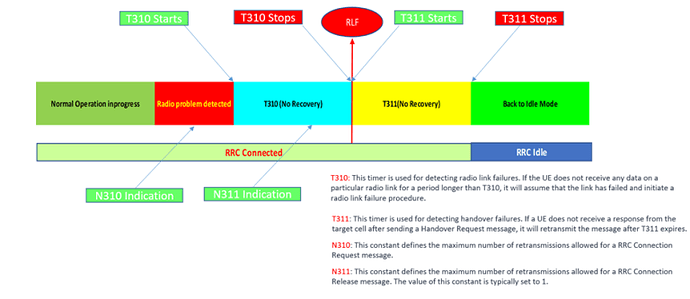RLF stands for “Radio Link Failure” in LTE, which occurs when the radio link between the user equipment (UE) and the eNodeB (base station) is lost. This can happen due to various reasons such as interference, coverage issues, handover failures, or equipment malfunction.
When an RLF occurs, the UE sends an RLF indication message to the eNodeB, which triggers a series of actions to recover the lost connection. The eNodeB can try to re-establish the connection by retransmitting the lost packets, adjusting the transmission parameters, or performing a handover to a neighboring cell with better coverage.
If these recovery attempts fail, the UE is instructed to perform a cell reselection to find a better cell to connect to. This is done by measuring the signal strength of neighboring cells and selecting the one with the strongest signal.
RLF are implemented at both UE and eNB side
- UE Detected Radio Link Failures (RLF)
- eNodeB Detected Radio Link Failures (RLF)
We will discuss mostly UE detected Radio Link Failure because 3GPP does not specify eNB radio link failures.
Read more: ![]()
